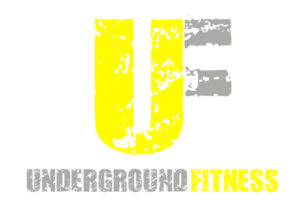It’s probably the most basic question regarding getting into shape, but it’s one that’s not regularly determined by any means, and it eludes most of the clients I train. So I am writing this to give you a better understanding of exactly what amount of calories you need to maximise a body transformation.
“Getting into shape” generally means losing body fat, while building (or at the very least maintaining) muscle. We know that weight loss is determined by calories in minus calories out, and there can be negative weight loss (muscle) as well as positive weight loss (fat), but we never really give ourselves a clear targeted intake of calories to make sure we are only losing calories positively (fat).
I will start by addressing the general misunderstanding that is “I’ll eat as little as possible to get into the best shape”. It’s just not correct. The key to getting into shape is by maximising positive weight loss, and not coming anywhere near losing muscle.
A person will generally burn the calories they have in their stomach along with the sugars (derived from all carbs) in their blood, and then the body fat they have stored. It is this reason you must not over-eat, because not only will you store any excess calories not used, but you will be unable to tap into your own bodyfat stores. The problem is, if there is too little food coming through your stomach, you will get hungry. This is more than just a feeling, it is a stress that releases a nasty hormone that stops fat burning, and causes you to store any additional food as fat to counteract this sudden drought. This hormone also releases your “protein stores”, or your muscle, to be converted to energy. So not only will you be unable to build quality “tone” with muscle, but you will sag with a loss of hardness and definition.
So we have seen that too little calories can not only halt fat burning, but it can eat muscle. But after what defecit does this ugly process begin?
There are 2 things you need to determine your optimal calorie requirements, your weight and your body fat percentage. Given these 2 figures you can determine your body fat mass.
Example 1: 200lb man with 20% bodyfat = 200 x 0.20 = 40 lbs. of body fat
Your body can metabolise body fat through body fat oxidation as a certain rate before having to resort to burning muscle. Through research and as stated by Lyle MacDonald, one of the foremost authorites on nutrition and healthy eating, this level is 31 calories per pound of bodyfat. Bearing in mind this is of your bodyfat mass, not total weight. So a person with more bodyfat can have a greater calorie defecit without losing muscle. So given our example:
Example 1: 200lb man with 20% bodyfat = 40 lbs. bodyfat
Therefore: 31 x 40 = 1230 calorie defecit per day without losing muscle.
Now lets compare this to an athlete:
Example 2: 140lb woman with 8% bodyfat = 140 x 0.08 = 11 lbs of bodyfat
Therefore: 31 x 11 = 341 calorie defecit per day without losing muscle.
So, how far you can push yourself depends on where you are currently. I mean this makes perfect sense considering how different people are in terms of size and calorie expenditure, a general figure just could’nt be applied to everyone.
SO you have your weight, your bodyfat percentage, your bodyfat mass, and now your maximal calorie defecit level. All you need now is your BMR, or your Basal Metabolic Rate. This is a rough estimation of how many calories your body requires in a day. It takes certain things into account like sex, age, weight, heaight, activity level etc.
You can find your BMR here: http://www.bmi-calculator.net/bmr-calculator/
Once you have your BMR use it in this basic formula:
BMR – Maximal calorie Defecit = Optimal Daily Calories
So we will take the 2 examples and give them rough BMR’s
Example 1: 200lb man with maximum defecit of 1230 calories, and BMR of 3500 calories
Therefore : 3500 – 1230 = 2270 Calories
Example 2: 140lb woman with maximum defecit of 341 calories, and BMR of 2000 calories
Therefore : 2000 – 341 = 1659 Calories
So the man and woman need 2270 and 1659 calories respectively to burn maximum body fat whiloe not eating into muscle. This is the perfect calorie guide to get results as quick as humanly possible.
Apply it to yourself and find the minimal calories you need. Try to match this as closely as possible, but in my opinion you should narrow it up, as you definitely don’t want to lose any muscle.





